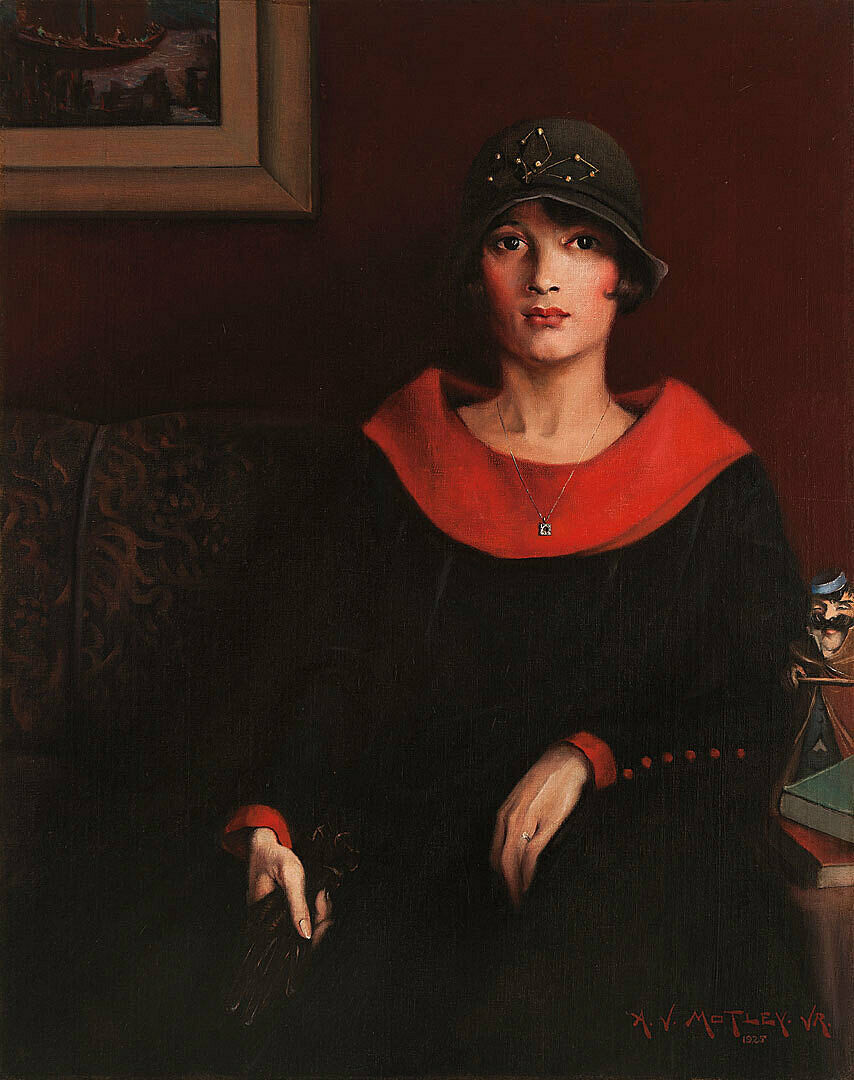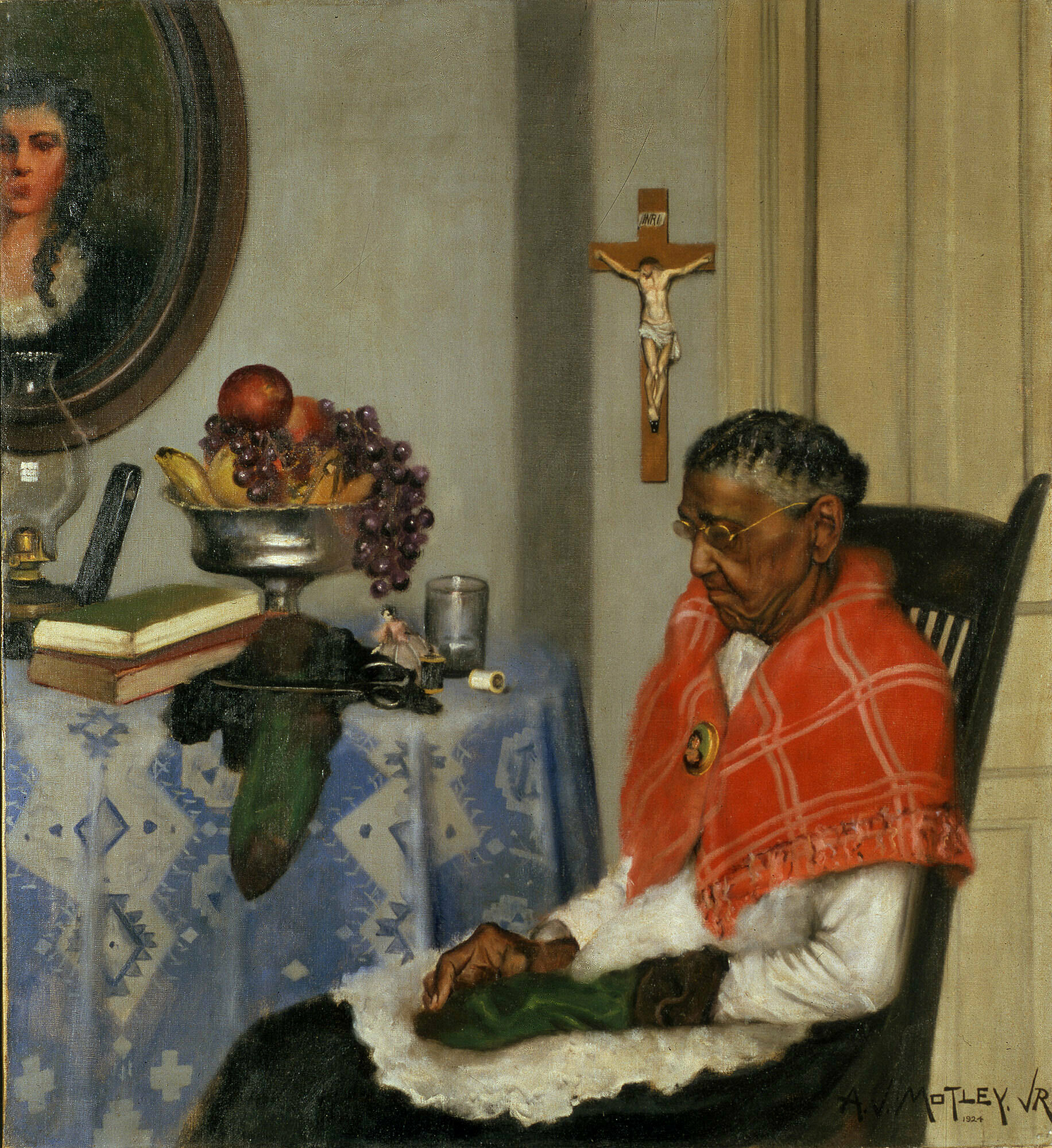Portraits
Artist as Observer
Mending Socks, 1924 is a portrait of Archibald Motley’s paternal grandmother, Emily Sims Motley. He surrounded his grandmother with objects that were important to her. Motley’s grandmother was born into slavery. This part of her life is included in the painting: the portrait of a white woman at the top left is Emma Sims Kittredge, the daughter of the slave owner and the mistress whom Motley’s grandmother served while she was a slave. Emily Sims Motley was freed at the end of the Civil War, about sixty years before this painting was made.
a. Grades K-12: Ask your students to take a close look at Mending Socks, 1924. Let your students know that the person in the painting is the artist’s grandmother. What do they notice about her body language? Her facial expression? What might she be thinking about? Ask students to explore and discuss the objects surrounding her. What can they tell about Motley’s grandmother from the clues that the artist provides?
b. Grades 6-12: Tell your students that Motley’s grandmother was a former slave, and the woman in the oval painting on the wall at the top left of this artwork is Emma Sims Kittredge, her mistress during that time. Have students compare the two portraits. How are they different? Discuss how Motley depicted this aspect of his grandmother’s life.
c. Grades K-12: Ask students to think about a grandparent or another adult in their family. If they made a portrait of this person, what would they include? What activity would they show their subject engaged in to tell the viewer about that person’s life? What objects would they include to let the viewer know who they are? Ask students to reflect on how they would represent this person and discuss their ideas with a partner.
Motley’s portraits of African Americans generally express great dignity, confidence, and composure. He wanted viewers to see their beauty and accomplishments, hoping this might dispel negative stereotypes and racism. Motley once said that he wanted to paint every African-American skin tone, from dark to light—showing the beauty of all. He titled this painting The Octoroon Girl. “Octoroon” is an out-of-date term for a person who is one-eighth African American, and usually had somewhat lighter skin.
d. Grades 6-12: Ask your students to compare and contrast The Octoroon Girl, 1925 with Mending Socks, 1924. What differences can students find? For example, differences in who the women in the paintings might be, their poses, gaze, body language, and clothing.
e. Grades 6-12: Ask your students to define the word stereotype and discuss how they feel when people label or stereotype them. Ask them to write about an occasion when they were stereotyped. Ask student volunteers to share their stories. How did they respond and deal with being stereotyped? What would they want the person who stereotyped them to know about them? What would they want that person to see and understand differently?


